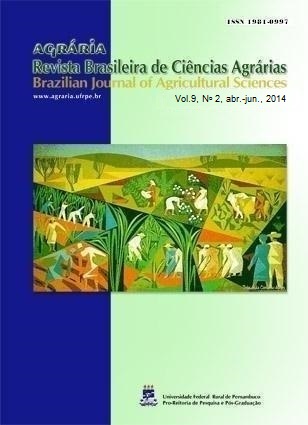Nutritional potential of plants of Typha domingensis Pers. as forage option
DOI:
https://doi.org/10.5039/agraria.v9i2a3565Keywords:
chemical composition, digestibility, fiber, forageAbstract
This study aimed to evaluate the chermical-bromatological and digestibility in vitro of fiber of Taboa plants cultivated and harvested in wetland environments at different sampling locations. The experiment design was a completely randomized, in a factorial arrangement 3 x 5, of three parts of Taboa plants (palmetto, leaf and inflorescence) and five collection sites (75, 120, 339, 590 and 740 m about sea level) in six replications. High mineral matter (8.2%), crude protein (11.5%) and in vitro digestibility of fiber (83.1%) of Taboa plants were found in leaves, while the inflorescence of these plants showed higher contents of dry matter (22.6%), ether extract (2.1%), and lignin (16.9%), additionally was observed in the stem or palmetto high contents of acid detergent fiber (52.8%), however, low levels of lignin (8.9%) compared to other parts of the plant, demonstrating high levels of cellulose in acid detergent fiber. Plants leaves of Taboa constitute forage option due to its nutritional value and the cultivation of these plants at different heights in relation to sea level does not affect its chermical-bromatological and digestibility of its fiber.
Downloads
Downloads
Published
How to Cite
Issue
Section
License

This work is licensed under a Creative Commons Attribution-NonCommercial 3.0 Unported License.


